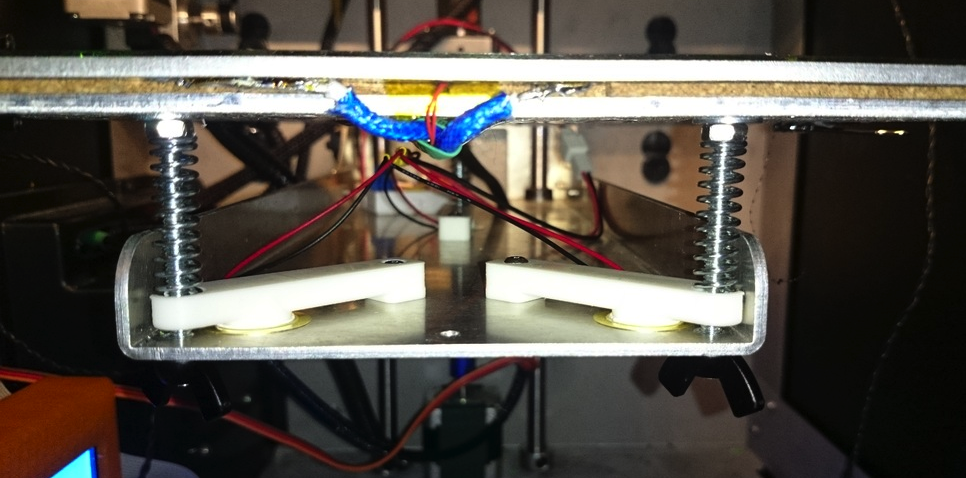If you have ever opened a musical card, you have already encountered piezo discs. They are used in microphones, watches and are ubiquitous in the electronics landscape as detectors of mechanical force.
Piezo discs were glued with silicone to these ABS levers on Thingiverse as the solution. Njål tried other solutions and arrived at this set-up as a working option.
Ph.D. subatomic physicist and maker Njål Brekke has found a way to use the discs in 3D printers to automatically level the print bed on his 3D printer and shared a video and accessory files to Thingiverse to help others do the same.
According to Njål, the piezo disc assembly is sensitive enough to “detect me blowing lightly on the bed, or touching the frame [of the 3d printer].”
Njål uploaded accessories to Thingiverse to help others 3D print the parts required to fit 3D printers with piezoelectric disc sensors, where they can be used within a circuit to detect mechanical forces that occur during 3D printing.
So, how do piezo discs work? What makes them so versatile and sensitive?
The word piezoelectric derives from the Greek piezein, meaning to squeeze or press. Piezo is Greek for “push”. Piezo discs generate electricity in response to forces owing to piezoelectric properties of materials in piezo discs.
Piezoelectricity is a property of crystals such as quartz and Rochelle salts and is a reversible phenomenon (which explains why musical greeting cards containing the discs only play music when opened). Materials in piezo discs generate electrical charge when compressed (and conversely negative charge if decompressed).
Njål 3D printed ABS plastic levers to sandwich three piezo discs between the bed and the support of his Solidoodle 4 3D printer. The piezo are discs sensitive enough to detect the downward force at the moment when the hotend makes contact with the printing surface.
Njål wired the piezo discs in his 3D printer to a charge collector, which sends a trigger signal to the desired printer electronics when it reaches the voltage threshold set by the user.
With knowledge of circuitry, these circuits can be configured in other ways, such that trigger signals are sent to printer components only when there is a decrease in mechanical force.
The following video shows the setup Njål shared on Thingiverse. All of the parts (excluding the 3D printer shown in the video) cost Njål under $20, and he purchased all of the needed electronics from sparkfun. Njål continues to tune and perfect the circuit, and he says the trick is finding the voltage so that the charge collector sends the trigger to the desired forces and not in response to normal vibrations that occur during 3D printing. He also stated that his setup is adaptable to most 3D printers.
“Right now the simple circuit works fine, but the margins for triggering to easily or not at all is smaller than I would like if the design should be used by others, not just by me,” Brekke explained to 3DPrint.com. “So I have a slightly more complex circuit design in mind, which I will test as soon as I find the time. Hopefully it will be good enough that I will consider this setup out of the “work in progress” phase, and into the final version.”
